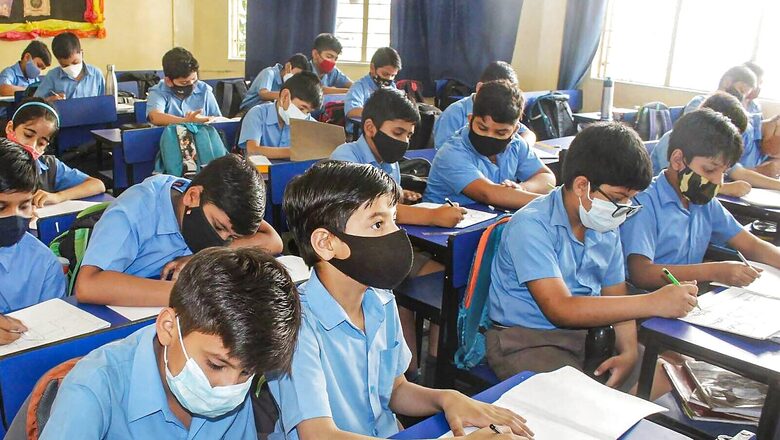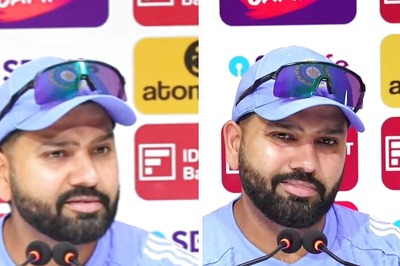
views
The Annual Status of Education Report (ASER) 2022 only confirms what is seen on the faces of children in schools – there has been unprecedented learning poverty due to Covid. Given the already unsatisfactory learning outcomes in schools, we are facing a serious situation that demands an immediate response. Justifying non-hike in school budgets due to poor governance and politicisation is not a solution; it does not help the aspirations of the poor who still throng schools. Three-fourths of children have come back to government schools as incomes and employment have shrunk. Girls have been withdrawn from private schools that parents could not afford. Government schools in most states have become the abode of children from vulnerable social groups of parents with limited disposable incomes, and girls, whose education often continues to be a formality for marriage. Improving a government school is the most pro-poor activity that any state can undertake. Hopelessness does not drive democracies; aspirations do.
Recognising the burden of non-comprehension is the first step. Let’s forget Central and state funds issues. It is time to give united governance to schools, for our children. Schools must shed their forlorn and dilapidated look, an outcome of the long school closure due to the pandemic. Uttar Pradesh’s ‘Mission Kayakalp’ for making schools attractive is a great example to follow. Let all states improve the look of schools as it does not cost much and is a statement of state commitment to the future of children. It matters electorally and after pro-poor public welfare to remove asset deficits of the poor (house, toilet, electricity, bank account, gas, women’s collectives, food grain security, etc.), parents are looking forward to better schools that make their children’s future. Democracy makes deprived households dream. Examples of many success stories out of poverty through education motivate vulnerable households. It is also the best intervention for electoral gains as women from vulnerable groups cast their votes in large numbers.
While a lot has been done to improve the schools on the supply side with the Sarva Shiksha Abhiyan and subsequent efforts, there is a need for rejuvenating and re-imagining learning in schools. As the ASER 2022 also confirms, boys and girls of elementary school-going age have all come to schools; it is the system that is failing them. It is especially unfortunate as we live in times when even average, diligent teachers can make a difference in learning outcomes by using effective technological support for learning. Blended learning through teachers, assessing progress non–threateningly, and making learning attractive for children, is possible today, with little effort.
To ensure impactful outcomes of learning in schools today, the following needs to be done at the earliest –
First, local governments and women’s collectives should be given the responsibility of elementary schools with funds, functions and functionaries, immediately. They must be authorised to fill any vacancy by rationalisation or by recruiting a community volunteer who has cleared the Teacher Eligibility Test (TET). The devolved funds should be sufficient to meet the needs for basic learning environment and support. The school should become a community institution rather than a government school. It should be able to draw on voluntarism or donation of any person willing to ensure learning outcomes, or support for gadgets needed for learning to happen. The physical and human infrastructure has to be adequate for learning to happen.
Second, all teachers and teacher educators (block and cluster coordinators, state/district resource persons) should be immediately trained physically with gadgets and course material that can facilitate learning. Let every classroom have a large TV screen and sound system to run the best online lessons to aid what’s happening in class. Unless teachers know how to use it effectively, and unless adequate gadgets are available for children, it will not be effective. It is not a question of centralised purchase; it is a challenge of universal school-level access. Let us not deny children the finest practice workbooks.
Third, hand over the mid-day meal responsibility to village-level Self Help Groups (SHGs) of women. The Panchayat and School Management Committee shall only be the supervisors of the SHG. Teachers should not have any responsibility for the mid-day meal. They must only teach.
Fourth, develop public libraries where elder children in the village can study and prepare for jobs and admission to good institutions. Such community institutions attract volunteers. Karnataka has done outstanding work on strengthening its public libraries and this has gains for school learning outcomes as well.
Fifth, use sound boxes, video films, play-way learning items, indoor and outdoor sports, and cultural activities for learning on scale. Let toys-based learning start with early childhood learning support of the Integrated Child Development Services. In any case, the New Education Policy (NEP) 2022 mandates a continuum from age 3 to 8 to ensure this important early beginning in life. The nutrition challenge must also be the same school leadership’s responsibility as too many committees only dilute the convergent action. Field functionaries like Anganwadi Sevikas, Accredited Social Health Activists (ASHA), Auxiliary Nurse Midwife (ANMs), and Panchayat Secretaries, must all be made responsible for the well-being of children. Healthcare management must also be with the local government to make a difference.
Sixth, there should be a community campaign and regular school-level interaction with parents. Teachers must build a relationship with every household and interact to ensure children’s care and learning. Parental involvement can greatly improve learning outcomes. There is no other societal mission that is more immediate. The Nipun Bharat Mission to ensure oral and written literacy and numeracy should be a people’s movement. Evolve it into a campaign mode like the Total Literacy Campaigns with civil society, collectors and panchayats.
Seventh, let the Central and state grants be disaggregated gram panchayat-wise and urban local body-wise to ensure the transfer of untied funds to schools, including salary payment on satisfactory performance. The school must be community managed and the state is at best the principal financing arrangement. Let the private sector adopt schools to make them better. Let the Central and state governments equally share the additional resources needed to rejuvenate the system, given the fact that education is a concurrent subject from 1976 onwards. Pedagogy and technology allow us the opportunity to ensure every child in school and every child learning. Let the ASER Report 2022 make us work on impactful outcomes. From Sarkari to Asarkari (effective)!
The author is a retired civil servant. Views expressed are personal.
Read all the Latest Opinions here




















Comments
0 comment